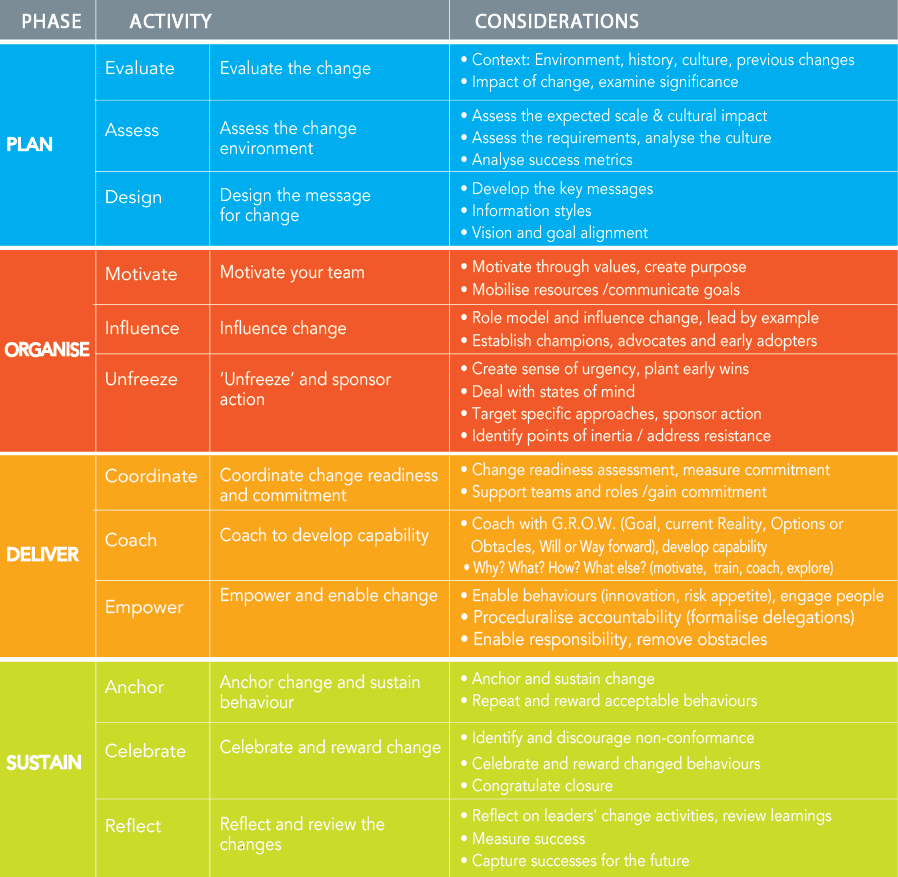
Change Leadership in Business Projects (The P.O.D.S. Model)
In a project environment there should already be a plan for the
physical outputs, perhaps an outcome or two, and some benefits that were in the
business case to justify the expenditure and resource allocation. All too often
the people engagement side and the end-user engagement is not considered until
well into the project, if at all. In poorly managed projects the project
manager considers his or her job finished when the physical components are
complete. We are not talking about variation management here - a topic which
project management texts often call change management. We are interested in how
people engage with a new process and implement it to deliver the desired benefits.
Sometimes, if it's a piece of software, an application, the
implementation of a new process, a building, or even just moving a desk; the
change management piece can be given scant consideration. We've all heard the
phrase: "they just through it over the fence and hoped it would work." Project
Managers have a responsibly to manage a project to achieve the benefits of the
project, and should ensure that the people-change element is planned and
effectively managed, as with any other component.
End-to-end project management models have strong elements of engagement. Both PRINCE2 and PMBoK
based systems have extensive processes for stakeholder engagement and
communication. Agile (incremental) systems have an opportunity for similar, if
not greater, engagement. An Idealised agile project allows for repeated consultation and engagement at each iteration.
|


|
If we consider an idealised (waterfall) project process for an IT project:
we see that there is an obvious need for user engagement at the deployment phase and handover phase. Users might even get
some level of engagement and change management during User Acceptance Testing.
However, there is a role for change management (which is used to ensure
success) all along the process. Change management is not a "quality" process
for business improvement - it is a method for minimising the risks of project
failure when implementing technological, process or organisational change.
Kotter's 8-steps to leading change, D.E Hussey's EASIER model, or Prosci's 3
phases of change management are examples of change management models that can be
applied to project work. McKinsey's 7S Framework has mutually reinforcing
elements that can also be used in projects to manage the change process. As an
experienced project manager, the P.O.D.S. model of four phases fits well with
project practice.
- Plan
- Organise
- Deliver
- Sustain
Project teams may include specialist members to facilitate change, with titles like: Change Manager, Implementation Manager,
Communication Lead, Change Champion, or Training Developer. Regardless of the team that is brought on-board, the
Project Manager must coordinate the people and technical elements to deliver successful outcomes. Within each phase of P.O.D.S.,
activities prompt specific actions that help you guide the engagement process and move people to new behaviours that deliver the required project outcomes.

The key to change, as many change management models depict, is to provide a clear vision, communicate well, encourage commitment and participation from
those affected by change, and lead the required behaviours. Change management models are a good tool to use as a framework for successful change, and also as
in the case of the EASIER and ADKAR Models, acts as a good checklist in order to give the best possibility of success in a change project. P.O.D.S. has a range
of support checklists and tools that will help you achieve the desired business outcome.
Remember, change management models are only guides; so understand as many as you can, and then make your own judgement as to which will be most useful for you.
Resources:
●
A summary of Change Leadership Model P.O.D.S. (200k download)
●
Change Leadership Workshop Booklet (900k download)
| ©1999 - 2020 Sandar Management Services Pty Ltd
|
|




